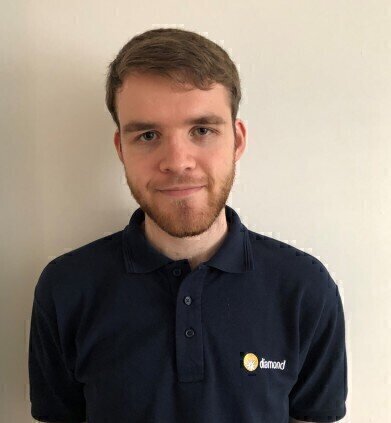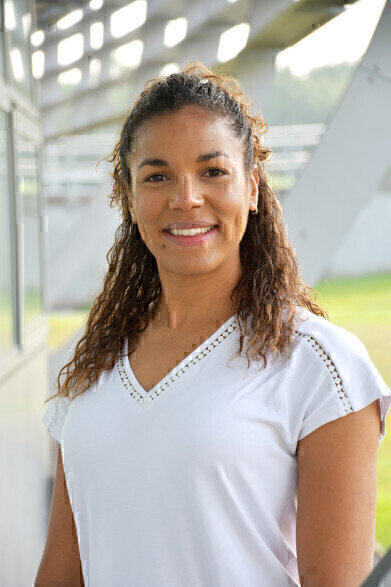-
 Sam Embling (Credit: Diamond)
Sam Embling (Credit: Diamond) -
 Lorraine Bobb (Credit: Diamond)
Lorraine Bobb (Credit: Diamond)
News & Views
Inspiring young scientists to meet Global Challanges
Nov 10 2021
Celebrating World Science Day, (Nov 10) has seen renewed calls for more young people to follow careers in science and technology to help tackle and solve global challenges ranging from climate change to infectious diseases.
The UK’s Diamond Light Source, a large science facility with international appeal, offers a variety of careers to young people in a centre with representatives from over 43 countries. Many people start or develop their careers at following a summer placement, work experience or by choosing an Apprenticeship scheme.
Sam Embling, who recently completed his final year as a Mechatronics Apprentice, is now in a Beamline Technician role: “The research carried out at Diamond can have a large impact on many people’s lives. Working at the forefront of the sector, aspects of brand-new technologies and developments are researched here, gives an insight into what the world will look like in the future. Throughout the many placements in the 4-year apprenticeship, there is the opportunity to work on important projects that have real world impact. One day you could be CNC machining a part used for research into cancer cells, whilst the next you may be assisting scientists in setting up an experiment to analyse lunar rocks. The work which you complete can be very fulfilling and give you a sense of pride in what you have helped achieve.”
Lorraine Bobb said that the two summer studentships she did at Royal Holloway University of London and Diamond, as well as working on her PhD at CERN and CESR, guided her decision to take up a post in the Diagnostics Group at Diamond in 2014. Now she heads the group working with a team of physicists, engineers and technicians who provide instruments that are effectively the ‘eyes and ears’ of the machine and ensure the delivery of high-quality beams for Diamond’s scientific user community and their experiments.
“The nature of scientific research in such a large-scale facility and the variety of work at Diamond makes every day different. We have to think outside of the box and innovate, as often we’re trying things that simply haven’t been done before. This is true across the board at Diamond, whether it be beamline scientists, those providing support for the accelerator, or those ensuring the infrastructure runs smoothly,” comments Lorraine.
Adam Pike (Fourth Year Mechatronics Apprentice) says: “At Diamond, there is a sense of pride behind the scientific experiments and the work that is conducted. The work is also so precise and diverse that it means you must think of innovative ways to make the synchrotron more effective and manufacturing the systems that are involved in the running of the synchrotron always changes, which involves new challenges.”
Prof. Andrew Harrison, CEO at the UK’s national facility Diamond Light Source said: “When we rallied the best science from across the globe, we saw the power of being united to find the path out of the pandemic with the Covid vaccine and at Diamond we are pleased to contribute to the creation of patent-free low-cost anti-viral treatments (the Covid Moonshot). The discovery of a plastic digesting enzyme first visualised at Diamond is another example of the impact science can have. Through our global network of academic scientists, there are many other innovations in the pipeline including new sources of renewable and sustainable energy, materials, and food. What is paramount in the complex equation we face, is the people and the skills we need to assemble, and for this, we must encourage more people to pursue STEM (Science, Technology, Engineering and Maths) careers; not just for the benefit of the UK and global economy but to secure the future for us and our children.”
More information online
-----------------------------------------------------------------
Scientists and engineers representing 25 large-scale science facilities from across the global light source community have contributed to a new video campaign to share insights and inspire all those with a curiosity for science and careers connected to synchrotrons and Free Electron Lasers (FELs).
#LightSourceSelfies, which launches today on World Science Day for Peace & Development, features scientists and engineers who hold a range of positions at 25 large scale science facilities located across Europe, Asia, Australia, North America, and South America. The campaign also includes scientists who use synchrotrons and Free Electron Lasers (FELs) to carry out experiments that lead to important discoveries in areas such as health, the environment, agriculture, new materials, planetary science, palaeontology, and cultural heritage.
To follow the #LightSourceSelfies video campaign; more information online
To view current vacancies at synchrotrons and FELs within Lightsources.org; more information online
Digital Edition
Lab Asia 31.2 April 2024
April 2024
In This Edition Chromatography Articles - Approaches to troubleshooting an SPE method for the analysis of oligonucleotides (pt i) - High-precision liquid flow processes demand full fluidic c...
View all digital editions
Events
Apr 22 2024 Marrakech, Morroco
Making Pharmaceuticals Exhibition & Conference
Apr 23 2024 Coventry, UK
Apr 23 2024 Kintex, South Korea
Apr 23 2024 Seoul, South Korea
Apr 24 2024 Jakarta, Indonesia



.jpg)













